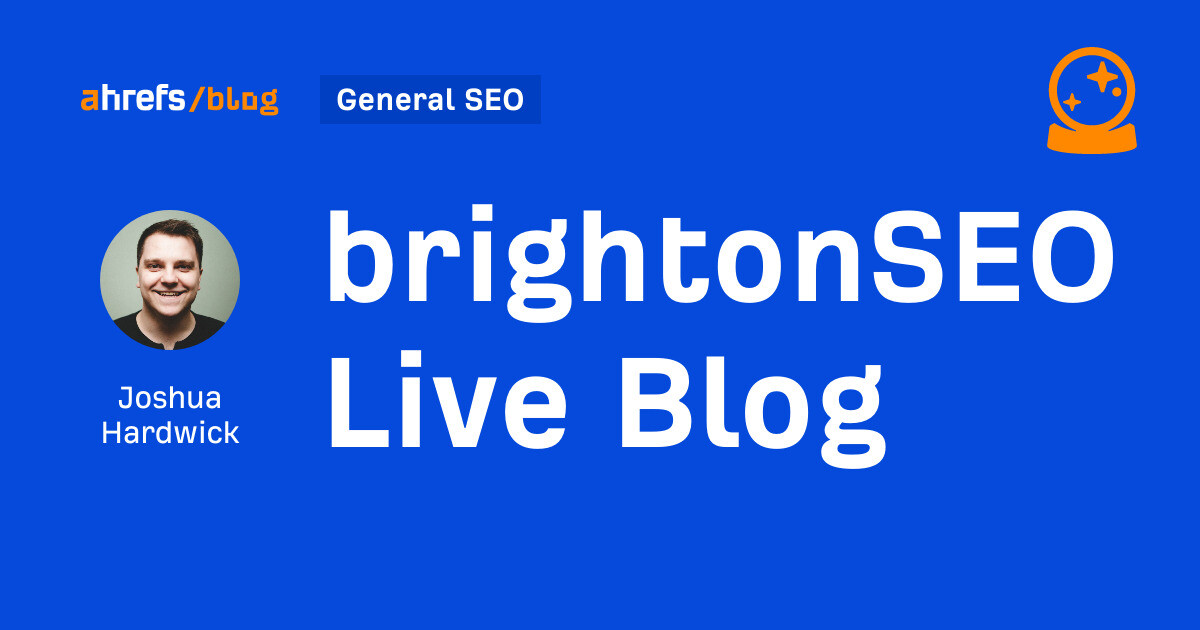SEO
17 SEO Best Practices For Better Ranking

There are many best practices for SEO, including those provided by Google.
Here are 17 tips that can help one develop a better search presence.
What Do Best Practices For SEO Even Mean?
Best practices for SEO are generally regarded as those that abide within Google’s evolving guidelines and are not explicitly listed by Google as manipulative.
But best practices are more than just what Google considers manipulative and what is not.
For example, Google’s guidelines don’t tell you how to choose hosting, how to optimize a WordPress site, or whether a website builder makes the most sense for a specific situation.
Those are the kinds of best practices this guide will cover.
1. Choose The Best Platform For Your Situation
A good place to begin is at the point before any code is uploaded to the web.
Understanding the technology that underlies a web presence is important to making the best choice for SEO.
Get this part right, and the site will be well positioned for sprinting toward first place.
Why Choose Self-Hosted
Today’s choices are between a CMS (content management system) hosted on a publisher’s server, and site builder platforms where the technology is hosted and managed by the provider.
Many people choose self-hosted open source solutions (like WordPress) because of the extensive support and development network, which provides complete freedom to build custom sites that users can optimize without limits other than their own skill level.
The downside of self-hosted solutions is the need for technical skills for optimizing templates, dealing with constant updates, and acquiring the necessary knowledge to create a strong security posture against hacking.
Examples of a self-hosted CMS:
Why SaaS Platforms Make Sense
Many businesses prefer to focus on doing business, not maintaining website technology.
An attorney’s skill is litigating, not learning how to switch to a System Font Stack on their self-hosted CMS.
For businesses that prefer a high-performance website without having to deal with technology, the SaaS (software as a service) website builder platform is increasingly considered the best choice for many small to medium-sized businesses.
Examples of Software as a Service (SaaS) platforms:
The best practice, then, is to audit what the company needs for transacting business online and then see which technology works best – a self-hosted CMS or a SaaS website builder platform.
2. WordPress SEO
There are many CMSs to choose from.
WordPress is arguably the most popular open-source, free system with a huge global community of developers supporting it, including for SEO.
It’s possible for anyone with a moderate understanding of how to use WordPress to create an entire website and pay almost nothing.
That includes free templates and free SEO plugins, plus any other plugins to extend the functionality, like the WooCommerce plugin for creating ecommerce stores on a $0 budget.
Web Development and SEO expert Adam J. Humphreys of digital agency Making 8 Inc. shared his thoughts on WordPress SEO best practices.
Adam explained:
“With WordPress, something as simple as the default theme will attain site-speed goals without much of any work.
Add in a good host with a Content Delivery Network (CDN), compression plugin like WP Rocket & ShortPixel, and the result is a screaming fast website. We’re talking 0.5-second load times, and that’s not going to happen on some paid solutions.
My favorite SEO plugin is RankMath Pro because it allows me to generate schema, generate local SEO page content, create video site maps, and do things that other plugins just don’t do at all.
A plugin like this allows me to highlight content for search engines in ways I have never seen any paid solutions outside of WordPress do.
A builder for WordPress like Bricks Builder is a templating system that allows you to create SEO-optimized bespoke themes that load webpages in a fraction of a second out of the box before even compression.
These days I think dentists using WordPress have better websites than a lot of the Fortune 500 companies, and I know this because I’ve done technical SEO audits for them.
WordPress can be best for SEO and security, assuming you have a simple maintenance plan and you have someone to click update a couple times a month (yes, it’s really that simple).
A completed site using WordPress is basically set. There’s no need to have a full time developer to keep up with the basic security updates anymore.”
I asked Matt Cromwell, a WordPress expert and Co-Founder of @GiveWP, to share some WordPress SEO best practices.
Matt offered the following insights:
“Folks who build websites with WordPress and want to focus on Web Core Vitals often start with caching plugins and whatnot. That’s a mistake.
The two biggest needle movers that will make your site faster are: (1) excellent hosting, and (2) clean markup.
Throwing a lot of caching at your WordPress website might help some on really slow hosts, but it’s never going to give you the performance you really want. So start at the foundation with fast hosting.
The biggest factor that impacts your markup is the combination of your theme and, most often, a page builder.
Most sites that perform really well use a minimal theme that works well with WordPress’[‘s] built-in content editor (aka Gutenberg). Page Builders very often are the biggest factor in slowing down a website. You either have to do a lot of custom code to minimize their impact.
So my biggest recommendation for small businesses that don’t want to fuss over their site too much and keep it lean and functional is to invest in highly performant hosting, keep your theme very minimal, and use the WordPress editor instead of a page builder.
Once you scale your business enough to hire talent, hire a great web developer and digital marketing specialist to make your site gorgeous and fast.”
Andrew Wilder of WordPress support company NerdPress offered an out-of-the-box best practice idea for WordPress SEO, one that’s related to fonts.
Andrew stated:
“We see a lot of sites using tons of web fonts – these can really slow things down if they’re not implemented well.
They’re especially challenging because they need to load early in the process (so the page can render properly), and when they load, they may cause layout shifts as the text that was first display[ed] changes the typeface.
Switching to a System Font Stack (which uses the default/system font of whatever device the user is on) can make an enormous difference in performance.”
3. Website Builder Platforms For Easy SEO
Understanding how to choose the best way to create an online presence is a best practice for SEO.
One of the ways to create an online presence is with a SaaS website builder platform.
Not too long ago, SaaS website builder platforms were great for building attractive websites but not so great at site speed and SEO.
But that’s no longer the case.
Today, the major website builders match or surpass the traditional CMS in terms of site speed and SEO.
Over 14 million websites have been built using Duda’s technology, and Wix has over 200 million users worldwide.
Focusing on SEO, the main advantage of website builder platforms is that they take care of the technology, integrate directly with Google Business Profile, produce valid structured data, output on-page SEO that conforms to Google’s guidelines, and excel in site speed and performance.
A platform like Wix makes it easy for businesses to get online and start competing with excellent SEO.
A platform like Duda is easy to use for business owners. Still, it is designed to meet the needs of digital agencies and service providers who can leverage Duda’s platform to quickly roll out attractive and fast-performing websites that are flexible for customizations and SEO.
Duda’s platform handles the underlying technology, for example, optimizing the site for speed, integrating with a CDN (content delivery network), and semantic tagging such as in-section elements.
That allows agencies and developers to focus on what matters: content, promotion, and SEO.
Anton Shulke, Duda’s Head of Influencer Marketing, explained:
“The SEO settings Duda offers website builders are very user friendly and really help to differentiate their website from others.
Outside of providing users with Site SEO settings in our builder, we provide users with educational materials not only about our platform but about what SEO is and why it’s important.
Duda has created technology that optimizes our users’ websites for SEO in the background so that our clients can focus on their site design.
Duda takes care of complex optimization like code optimization for Core Web Vitals, generating robots.txt files, sitemaps, and even submitting websites to be immediately crawled upon publish.
Duda’s platform not only focuses on providing excellent out-of-the-box site optimization, it also provides clients with the opportunity to optimize their business listings with options like Local Business Schema and app integrations with Uberall and Localeze, making Duda an excellent choice for both web designers and business owners.”
4. Fast Web Hosting
Using a fast web hosting environment is a top SEO best practice – as is choosing the most appropriate web hosting platform.
Examples of different kinds of web hosting:
- Shared Hosting.
- Premium Shared Hosting.
- Virtual Private Server.
- Managed WordPress Hosting.
- Cloud Hosting.
- Dedicated Server.
The SEO best practice for hosting is to choose the fastest web hosting possible that also makes sense economically.
Optimizing for site speed depends on at least four factors:
- Fast hosting.
- Fast website.
- Fast user Internet access.
- Fast user mobile device.
Of those four, the first two (hosting and a fast website) are under a business’ control.
And of those two, fast hosting is arguably the most important — because a slow web host can make even a fast website perform slowly.
Shared Hosting
Shared hosting is the easiest way to deploy a website (or multiple websites).
The downside to shared hosting is that the least expensive plans place thousands of websites on a single server, so all of the sites have to share the limited resources of that one server.
That can result in slower websites, especially if any of the other sites on the server experience a heavy load.
Sites that are popular and use “too many resources” may have their traffic slowed down (a.k.a, “throttled”).
Some might say it’s a good way to begin, then scale up once the site becomes more popular.
I disagree.
Once a site becomes popular, the traffic will be throttled, which may slow a website’s popularity – because slow websites drive away site visitors who would have otherwise become customers or frequent visitors.
Many SEO pros may agree that a shared hosting environment is fine for a hobby site, but not for a site with monetary goals.
Premium Shared Hosting
Some premium shared hosting environments aren’t necessarily cheap, but are generally less expensive than renting an entire server.
The value of premium shared hosting is that it’s easy to deploy websites and access more server RAM and CPU resources.
Prices can range from $40 to over $100 per month.
Managed WordPress Hosting
Managed WordPress hosting is a specialized server environment specifically tunedfor WordPress websites.
These hosting environments only run WordPress sites and offer features that offload tasks from the website, enabling the WordPress sites to perform at a higher level.
The benefits of managed WordPress hosting are faster performance, better security, and less effort managing the technology side of WordPress.
David Vogelpohl, VP of Growth at WPEngine, shared:
“Unlike generalist hosts, which also have to try to optimize their platform & caching for any kind of site, managed WordPress hosts focus on one type of site, WordPress.
By focusing on one kind of site, managed WordPress hosts can optimize their networks, caching, and infrastructure to a much greater degree than what is possible in generalist hosting environments.
The result of this focus is often a much faster site for you when hosting on a managed hosting provider.
Managed hosting providers like WP Engine will often deliver faster speeds for your website by offering proprietary and advanced caching for your site, a global content distribution network (CDN), a low ratio of sites-to-servers on shared hosting, and highly-optimized infrastructure that is specific to the kind of websites they host.
In WP Engine’s case, we offer a free & global CDN through Cloudflare to all customers and include a proprietary caching layer called EverCache, which includes WordPress and WooCommerce specific optimizations which help make sites faster than off-the-shelf caching solutions built for any kind of site.”
Website security is an SEO issue because website rankings begin to drop once a site is hacked.
I asked David about WordPress security on a managed WordPress hosting service.
He answered:
“Managed hosting providers like WP Engine can be a powerful part of your security toolkit, offering support for managing malware and virus threats by helping you prevent malware before it becomes a problem, detect & remediate malware when it is present, and recover from malware infections that have affected your site.
Managed hosting providers often help with preventing malware threats by offering Web Application Firewalls (WAF), forcing strong passwords, supporting enterprise-grade SSO, and forcing security updates to key software used on your website (WordPress, PHP, MySQL, etc.).
For example, 37% of WordPress sites are on versions of PHP 7.3 or under, which are not supported with security updates, whereas 100% of WP Engine’s customers are on patched versions of WordPress and PHP.
Providers will also include network and server level threat detection and blocking capabilities which can help prevent some attacks before they even start, stop active attacks, or alert you to malware present on your site.
It’s also helpful to augment security benefits from your host by using solutions like WordFence or Sucuri to fully scan your site’s code for malware on a regular basis.
If your site has already been compromised by malware, managed hosts may offer support for remediation (fixing the vulnerability/removing the malware) depending on the nature of the malware and vulnerability that may have led to the malware being present.
Once malware has been removed from your site, you can use daily backups often provided for free by managed platforms like WP Engine to recover your site.
Coupled with a healthy security culture and practice in your own organization, choosing a managed host is a great foundation for keeping your site safe and secure.”
Virtual Private Server (VPS)
A VPS is the next step up that offers fast performance, but at significantly higher prices than shared servers.
The value of a VPS is more control over the server environment.
The downside is that many VPS hosting environments require more technical ability to manage successfully. However, some VPS offerings have a managed option where the host provider will manage the server at an extra cost.
Cloud Hosting
Cloud hosting is a specialized form of hosting.
In general, a cloud hosting environment is one in which the hosted data and processes are spread across multiple servers and feature redundancy, so losing data is nearly impossible.
The benefit of cloud hosting is that it’s scalable and is priced according to the resources used.
A site that experiences a sudden surge of traffic can quickly scale through the cloud hosting environment at a higher cost.
One of the downsides of cloud hosting is that it can require more technical skills to manage.
Dedicated Server
Managing a dedicated server isn’t as difficult as it used to be, but there is still a learning curve.
Even with a relatively easy-to-use control panel like Plesk Onyx, while it’s intuitive to use, it helps to know about PHP settings, firewall settings, NGINX, and Apache.
In general, there are no guardrails to protect you from errors on a shared server, so one needs to know their way around.
5. Title Element (AKA Title Tags)
The title tag is widely regarded as an important ranking factor.
What’s in the title element is important because that’s what is (usually) shown as a Title Link in the search results.
As a result of that knowledge, SEO pros have often used the title tag as a place to write the targeted keyword. That’s a 20+ year SEO tradition.
But times have changed, and Google rewrites the title link if it’s not descriptive or contains repetitive boilerplate.
That means the best practice for Title Tags has changed.
Today, the best practice for the title element is to be descriptive, concise, and non-boilerplate.
Adding a keyword phrase in there is still useful, but it’s important to be descriptive.
That means when someone reads the title tag, they should be able to know what the web page is about.
If the title tag doesn’t pass that test, it’s probably not good enough.
The best practice today is to target the user intent of the keyword phrase in the content and then target that user intent in the title tag.
For example, since 2000, the standard practice was that if you’re trying to rank for the keyword phrase “fishing flies,” you must use the phrase “fishing flies” in the title tag.
That’s no longer the case because that keyword phrase is vague, so Google will first identify the user intents behind that keyword phrase, and then rank sites that match the user intent – not the keyword in the title tag.
The best way to write a title tag is to understand the user intent of the keyword phrase and try to match the intent in your title tag.
Here are the search results for the keyword phrase “fishing flies”:
What’s notable about the title links in the above search results is that none of the top four search results have the keyword phrase “fishing flies” by itself.
The phrase or partial phrase is always in the context of a phrase that signals the user’s intent.
The number one search result doesn’t even have an exact match to the keyword phrase.
What those search results – and pretty much any search result – will show is that it’s not just the keyword in the title that is important, but rather, it’s important to tell what the topic of the webpage is in a way that also signals the user intent.
That, in my opinion, is a best practice for title tags: Optimize the title tag for the user intent topic, and don’t just dump the exact-match keyword phrase in the title element.
6. Alt Text
The alt text (aka alt tag or alt image attribute) is an HTML attribute of the image HTML element.
The purpose of the alt text is to describe what the image is about.
- Screen readers read the alt text to site visitors with vision impairment.
- The text in the alt attribute becomes visible when the image doesn’t download.
- Google uses the alt text for understanding the image in the context of showing it in Google Images.
The SEO best practice for using the alt text is to describe what the image is about.
Casey Markee, Founder of MediaWyse, offers a useful way to think about alt text:
“Ask yourself, if someone with a visual disability was sitting next to you, how would you describe a photo to them on your computer screen?
Alternative Text (Alt Text) exists to describe a photo to someone who cannot see it.
It does not exist to stuff with keywords, marketing jargon, or other nonsense.
Finally, make sure to add a ‘period’ to the end of your Alt Text. That’s an indicator to screen readers that the Alt Text has completed.”
7. URL Structure
Many in the search industry mistakenly believe that Google uses the words in the URL structure to understand what a page is about.
But that’s not necessarily the case today.
Google has a long history of minimizing the importance of using keywords in the URL. As recently as 2017, Google’s John Mueller said that keywords in the URL as a ranking factor are overrated.
Keywords in URLs are overrated for Google SEO. Make URLs for users. Also, on mobile you usually don’t even see them.
— 🫧 johnmu of switzerland (personal) 🫧 (@JohnMu) March 8, 2017
And in 2018, Mueller again minimized the importance of keywords in URLs for SEO:
I wouldn’t worry about keywords or words in a URL. In many cases, URLs aren’t seen by users anyway.
— 🫧 johnmu of switzerland (personal) 🫧 (@JohnMu) December 6, 2018
The best practice for URLs is to keep them short but descriptive.
That will help signal to a potential site visitor what the webpage is about (if they can see the URL), and help them to decide whether to click through to the webpage.
When in doubt, you can’t lose by asking how it will impact a potential site visitor.
So if you have the two main words relevant to the topic in the URL structure, that’s going to be just fine.
If you return to the example of the “fishing flies” search results, you’ll see that the number one result doesn’t have the keywords in the URL.
However, at position number one, Google still ranked it as the most relevant for that keyword phrase.
8. Best Way To Use Headings For SEO
Headings are like the title tags in that the role they play is to describe what the web page is about and what a webpage section is about.
John Mueller explained the best way to use headings:
“…what we use these headings for is well we have this big chunk of text or we have this big image and there’s a heading above that, therefore maybe this heading applies to this chunk of text or to this image.
So it’s not so much like there are five keywords in these headings, therefore this page will rank for these keywords but more, here’s some more information about that piece of text or about that image on that page.”
The best practice for using headings is to describe what the page is about or what a page section is about.
Casey Markee had this to say about optimizing heading elements:
“Headings on a page provide a road map for users and crawlers to navigate a piece of content.
Headings have been horribly abused over the years to the point they have targeted algorithmically by Google to be rewritten.
Focus on writing clear, concise headings that are not keyword-heavy, use Title-Case or Sentence-case, and follow clear Web Content Accessibility Guidelines (WCAG).
Always use headings sequentially (never jump from a H2 to a H4 just because), don’t keyword stuff every heading with your focus keyword, and never use CAPITAL-CASE in headings since some screen readers can confuse those with acronyms.”
9. Google Discover
Cindy Krum, Founder & CEO of MobileMoxie – which offers tools for mobile SEO – is enthusiastic about Google Discover.
She shared these tips for Google Discover SEO:
“Google Discover is natively included on all Android phones and in the Chrome app for iOS. Because there are so many users, Discover can be a significant driver of traffic. It’s a big way to reach enthusiastic and loyal site visitors.
Content is shown to users who are interested in a topic and not because of keyword queries, which can make it challenging to report it as directly attributable to SEO efforts.
But Google has to know what a web page is about in order to show it to users who have expressed an interest in specific topics. That means on-page SEO is important.
To get more exposure there, it is important for pages to have high resolution images, and to pass all the checks for Google’s mobile ‘Page Experience’ evaluation in Search Console.
It also helps if pages have a fast load time because the context of where Google Discover content is shown is mobile devices.”
A common mistake I see people make with regard to their featured image is to use one that’s too small, or that is not rectangular.
To ensure that Google surfaces your content in Google Discover, use an image at least 1200 pixels wide.
A rectangular image has the option to be displayed in its entirety. A square image will only be displayed as a smaller thumbnail, which won’t stand out as much.
Speaking of standing out, be sure to use featured images that are colorful.
Images with bright colors call attention to themselves in Google Discover and can help encourage clickthroughs.
Also, use the max image preview robots meta set to large:
<meta name="robots" content="max-image-preview:large">
10. AI For Content
Marketers commonly think of AI as a way to produce a lot of content faster.
(And often not-so-good content.)
The SEO best practice for AI is not in generating content, but in using AI to automate the entire process of creating content.
Jeff Coyle, Chief Strategy Officer of AI content automation company MarketMuse, explained the SEO best practices for AI-based content:
“Evaluate the entire content creation and management lifecycle at your company in order to identify stages in the process that are manual and inefficient.
AI can improve each stage of content creation:
- Research.
- Planning.
- Prioritization.
- Briefing.
- Writing.
- Editing.
- Publishing.
Finally, automation can be used in the promotion and optimization phases of the content lifecycle.
It’s possible to improve on each of those critical stages when refining a business content machine.
AI solutions for content can improve decision-making and research processes by making them faster and more successful.”
Jeff finished by sharing this best practice for getting the most out of automation:
“Make sure that any speed improvement and automation has checks and balances for quality and performance so that you can have breakthroughs in volume, quality, and content engagement/performance with AI while growing trust in the technology throughout your organization.”
11. SEO For Images
Images should ideally be colorful but also low weight, under 100kb (and ideally under 50kb).
I know that sounds unrealistic, but the truth is that image editing software like Photoshop can help create the smallest possible image that still looks great.
Images within the body of an article are great for breaking up the content and helping readers make it to the end of the article.
But make sure the image is relevant to the content because, in that way, it will help communicate the topic or message of the content.
12. SEO For Product Pages
Cindy Krum is also an expert on optimizing product pages for SEO and conversions on mobile-sized webpages.
She had much to share about best practices for optimizing product pages.
“Mobile product pages are a significant opportunity for SEO, but it can be different from what most SEOs are used to.
We are seeing more and more of an emphasis from Google on Merchant Center Listings, so when you are optimizing product pages for SEO, it is essential to know if those are ranking for your mobile shopping query.
If there is a Free Product Listing module ranking for your keyword, it could be hard to outrank that; it would be a bit like outranking a Knowledge Graph result.
We think that users like Merchant Center packs in the search results because they function as a quick price comparison, so it seems likely that Google will maintain these.
In this case, especially for broad queries like this, the strategy for ranking product pages is all about ranking in the Free Merchant Center Listings – which is a whole new game!”
13. Best Practices For Category Pages
There’s a longstanding idea in the search community that category pages aren’t useful, so they add a noindex, follow robots meta tag to the pages.
But that’s a big mistake — because then, Google will not index the category pages (as requested), and because of that, Google won’t follow the links, because the page is not indexed.
So, the best practice is always to allow search engines to crawl the product pages.
Another best practice is to use unique excerpts for every page.
Those excerpts are what will be shown on the category pages. Using a snippet from the first few sentences of a webpage for the excerpt is a missed opportunity.
Category pages are a great way to present a general page about a topic.
14. Best Practices For Review Websites
Google wants to rank product reviews that are real and not just product summaries; Familiarize yourself with Google’s product reviews content guidelines.
When writing reviews, make sure to show images of the product and use as many as a shopper may need.
If it’s useful, show images of the product used to illustrate a review section.
The key focus of Google’s guidelines is to encourage product reviews that are helpful to users.
The product review guideline ends with this:
“When writing reviews, focus on the quality and originality of your reviews, not the length… This will deliver the most value to shoppers reading your reviews.”
The best practice for SEO on review websites is to provide guidance about a product and to help shoppers make better decisions.
15. Structured Data For SEO
Joost De Valk, Founder of Yoast SEO Plugin, shared his tip for structured data best practices.
Joost shared:
“When optimizing your site, make sure you have all the important information not just in human readable text form but also in machine readable structured data.
Whether it’s your store’s opening hours, the (sale) price of a product on a web shop, or the title and author of a news article on a news site: there’s a schema.org structured data for everything.
As Google’s structured data guidelines are constantly evolving, I’d highly recommend using a plugin for such work, as that shifts the burden of updating that schema on the plugin developer, instead of you.
Of course, that does mean you have to trust the plugin developer to actually do a good job for you as well as to understand the SEO impact.”
I agree with Joost that using a plugin for managing structured data is a best practice for SEO. Google’s structured data guidelines are constantly updated.
By using a plugin, one no longer has to devote time to keeping up with changes to the structured data guidelines and taking the time to update the structured data sitewide.
16. Best Way To Do Internal Linking
Internal linking is a way to keep crawlers indexing content and to help Google better understand which content is important.
Scott Hendison, CEO of Search Commander, Inc., offers some useful ideas about internal linking:
“I’m currently auditing a giant website that was migrated by someone, where they did (at least) include all of the 301 redirects, but they did not fix the internal linking structure.
I’m simply using the better search replace plugin in WordPress to change tens of thousands of redirects and redirect chains to show the final URL destination. I guess I would call this tactic, ‘reclaiming your own internal link equity.’
It’s pretty basic, but I never fail to get a ranking bump when I do that to sites, which is quite often.
There are always redirects in place, but nobody bothers to fix the links within the content itself.
The 301’s of course, need to be left in place, for old bookmarks and external links, but finalizing the internal linking structure to have no redirects is something I’ve strongly believed in for a long, long time, and seen improvements after doing so – especially when there are redirect chains.
Some SEO tools will list redirects as a minor issue, but over time, these kinds of issues add up, particularly with chained redirects, and become bigger issues.
I strongly encourage clients in favor of the fixes. They’re easy to find and fix and can result in significant improvements.”
Joost had this to say about internal linking:
“When optimizing a site, one of the first things to do is making sure you improve the internal links between pages.
Very often, sites will have very little to no internal links in their content, relying entirely on large navigation menu’s to get people to move around.
In the interest of helping both your visitors and search engines, you should link related content to each other from within that content.
This can often have dramatic effects on your rankings. There are tools and plugins out there that can help you find internal links easily, so you don’t have to know all the content on a site (I know I often don’t for sites I’ve written tons of content for).”
SEO consultant Chris Labbate offered more best practices for internal linking:
“When it comes to internal linking, I like to say that ‘Context is King.’
Here is what I believe is a best practice for creating internal links, with Semantic SEO in mind:
Try not to build links at the start of a paragraph.
We all know Google crawls internal links, but it also looks at the surrounding text around each link, as well.
This is especially true if the anchor text is too generic, like ‘click here’ or ‘follow me,’ Google is almost forced in this situation to look at the surrounding words to pick up extra relevance.
What it also means is that you can use that approach for better internal linking.
Always pay extra attention to the surrounding text of the internal anchor text.
If you give Google some good context around your links, this can help provide the crawlers with some good information about the link, but also improve your rankings by explaining what the link can do for them and any other user intent-related data.”
17. Read Patents Carefully
An important best practice for SEO is investigating every best practice to see if it holds true.
What sometimes happens is that patents and research papers are misunderstood, and subsequently, those misunderstandings become a false best practice.
Those kinds of false best practices are often based on a misinterpretation of what a Googler said, or of what was published in a patent or research paper.
For example, a common SEO myth is that Google uses “brand mentions” as some kind of ranking signal that is similar to a link.
This myth came about in a patent that was about using branded search queries as a type of citation signal, similar to a link.
The idea of the patent was that if users are searching with the name of a website plus keywords, then that could be considered as a form of a citation, though not as a link, but implied as one.
The entire patent, from the opening paragraphs to the end of the patent, was explicitly focused on search queries that contain a URL or website name plus the keyword phrase.
Somewhere smack in the middle of that patent was one paragraph that used the phrase “implied link.”
This is the paragraph from the Google patent:
The system determines a count of independent links for the group (step 302).
A link for a group of resources is an incoming link to a resource in the group, i.e., a link having a resource in the group as its target.
Links for the group can include express links, implied links, or both. An express link, e.g., a hyperlink, is a link that is included in a source resource that a user can follow to navigate to a target resource.
An implied link is a reference to a target resource, e.g., a citation to the target resource, which is included in a source resource but is not an express link to the target resource.
Thus, a resource in the group can be the target of an implied link without a user being able to navigate to the resource by following the implied link.
The SEO community removed that sentence from the context of the entire patent and then used that one sentence to create the idea that an implied link is when a URL is written but without it being a link.
This idea was further extended to the mention of a brand’s name.
This kind of mistake is not uncommon.
Some SEO pros still make the mistake of skimming a patent (without trying to understand it), and then stopping at one or two paragraphs that seem to confirm an SEO idea that they have.
That’s not how to read patents.
So, any time someone claims that a patent says Google does something, always look at the patent for yourself.
The best practice for learning about what Google might be doing (according to a patent) is to pay close attention to the opening paragraphs.
It’s in the opening paragraphs that you’ll find the key to understanding what the patent is all about. By doing that, you’ll be better able to avoid false best practices.
Understanding SEO
The understanding of SEO can be baroque or minimal, depending on the individual.
The most common error is focusing on what Google might be doing.
If there’s a golden rule for SEO best practices, whether researching keywords or evaluating competitors, it’s this: Develop your SEO strategy around how a site visitor or potential customer may react.
More resources:
Featured image: HBRH/Shutterstock
SEO
Google Declares It The “Gemini Era” As Revenue Grows 15%

Alphabet Inc., Google’s parent company, announced its first quarter 2024 financial results today.
While Google reported double-digit growth in key revenue areas, the focus was on its AI developments, dubbed the “Gemini era” by CEO Sundar Pichai.
The Numbers: 15% Revenue Growth, Operating Margins Expand
Alphabet reported Q1 revenues of $80.5 billion, a 15% increase year-over-year, exceeding Wall Street’s projections.
Net income was $23.7 billion, with diluted earnings per share of $1.89. Operating margins expanded to 32%, up from 25% in the prior year.
Ruth Porat, Alphabet’s President and CFO, stated:
“Our strong financial results reflect revenue strength across the company and ongoing efforts to durably reengineer our cost base.”
Google’s core advertising units, such as Search and YouTube, drove growth. Google advertising revenues hit $61.7 billion for the quarter.
The Cloud division also maintained momentum, with revenues of $9.6 billion, up 28% year-over-year.
Pichai highlighted that YouTube and Cloud are expected to exit 2024 at a combined $100 billion annual revenue run rate.
Generative AI Integration in Search
Google experimented with AI-powered features in Search Labs before recently introducing AI overviews into the main search results page.
Regarding the gradual rollout, Pichai states:
“We are being measured in how we do this, focusing on areas where gen AI can improve the Search experience, while also prioritizing traffic to websites and merchants.”
Pichai reports that Google’s generative AI features have answered over a billion queries already:
“We’ve already served billions of queries with our generative AI features. It’s enabling people to access new information, to ask questions in new ways, and to ask more complex questions.”
Google reports increased Search usage and user satisfaction among those interacting with the new AI overview results.
The company also highlighted its “Circle to Search” feature on Android, which allows users to circle objects on their screen or in videos to get instant AI-powered answers via Google Lens.
Reorganizing For The “Gemini Era”
As part of the AI roadmap, Alphabet is consolidating all teams building AI models under the Google DeepMind umbrella.
Pichai revealed that, through hardware and software improvements, the company has reduced machine costs associated with its generative AI search results by 80% over the past year.
He states:
“Our data centers are some of the most high-performing, secure, reliable and efficient in the world. We’ve developed new AI models and algorithms that are more than one hundred times more efficient than they were 18 months ago.
How Will Google Make Money With AI?
Alphabet sees opportunities to monetize AI through its advertising products, Cloud offerings, and subscription services.
Google is integrating Gemini into ad products like Performance Max. The company’s Cloud division is bringing “the best of Google AI” to enterprise customers worldwide.
Google One, the company’s subscription service, surpassed 100 million paid subscribers in Q1 and introduced a new premium plan featuring advanced generative AI capabilities powered by Gemini models.
Future Outlook
Pichai outlined six key advantages positioning Alphabet to lead the “next wave of AI innovation”:
- Research leadership in AI breakthroughs like the multimodal Gemini model
- Robust AI infrastructure and custom TPU chips
- Integrating generative AI into Search to enhance the user experience
- A global product footprint reaching billions
- Streamlined teams and improved execution velocity
- Multiple revenue streams to monetize AI through advertising and cloud
With upcoming events like Google I/O and Google Marketing Live, the company is expected to share further updates on its AI initiatives and product roadmap.
Featured Image: Sergei Elagin/Shutterstock
SEO
brightonSEO Live Blog

Hello everyone. It’s April again, so I’m back in Brighton for another two days of Being the introvert I am, my idea of fun isn’t hanging around our booth all day explaining we’ve run out of t-shirts (seriously, you need to be fast if you want swag!). So I decided to do something useful and live-blog the event instead.
Follow below for talk takeaways and (very) mildly humorous commentary. sun, sea, and SEO!
SEO
Google Further Postpones Third-Party Cookie Deprecation In Chrome

Google has again delayed its plan to phase out third-party cookies in the Chrome web browser. The latest postponement comes after ongoing challenges in reconciling feedback from industry stakeholders and regulators.
The announcement was made in Google and the UK’s Competition and Markets Authority (CMA) joint quarterly report on the Privacy Sandbox initiative, scheduled for release on April 26.
Chrome’s Third-Party Cookie Phaseout Pushed To 2025
Google states it “will not complete third-party cookie deprecation during the second half of Q4” this year as planned.
Instead, the tech giant aims to begin deprecating third-party cookies in Chrome “starting early next year,” assuming an agreement can be reached with the CMA and the UK’s Information Commissioner’s Office (ICO).
The statement reads:
“We recognize that there are ongoing challenges related to reconciling divergent feedback from the industry, regulators and developers, and will continue to engage closely with the entire ecosystem. It’s also critical that the CMA has sufficient time to review all evidence, including results from industry tests, which the CMA has asked market participants to provide by the end of June.”
Continued Engagement With Regulators
Google reiterated its commitment to “engaging closely with the CMA and ICO” throughout the process and hopes to conclude discussions this year.
This marks the third delay to Google’s plan to deprecate third-party cookies, initially aiming for a Q3 2023 phaseout before pushing it back to late 2024.
The postponements reflect the challenges in transitioning away from cross-site user tracking while balancing privacy and advertiser interests.
Transition Period & Impact
In January, Chrome began restricting third-party cookie access for 1% of users globally. This percentage was expected to gradually increase until 100% of users were covered by Q3 2024.
However, the latest delay gives websites and services more time to migrate away from third-party cookie dependencies through Google’s limited “deprecation trials” program.
The trials offer temporary cookie access extensions until December 27, 2024, for non-advertising use cases that can demonstrate direct user impact and functional breakage.
While easing the transition, the trials have strict eligibility rules. Advertising-related services are ineligible, and origins matching known ad-related domains are rejected.
Google states the program aims to address functional issues rather than relieve general data collection inconveniences.
Publisher & Advertiser Implications
The repeated delays highlight the potential disruption for digital publishers and advertisers relying on third-party cookie tracking.
Industry groups have raised concerns that restricting cross-site tracking could push websites toward more opaque privacy-invasive practices.
However, privacy advocates view the phaseout as crucial in preventing covert user profiling across the web.
With the latest postponement, all parties have more time to prepare for the eventual loss of third-party cookies and adopt Google’s proposed Privacy Sandbox APIs as replacements.
Featured Image: Novikov Aleksey/Shutterstock
-

 PPC7 days ago
PPC7 days ago19 Best SEO Tools in 2024 (For Every Use Case)
-
SEARCHENGINES6 days ago
Daily Search Forum Recap: April 19, 2024
-

 WORDPRESS7 days ago
WORDPRESS7 days agoHow to Make $5000 of Passive Income Every Month in WordPress
-

 SEO7 days ago
SEO7 days ago25 WordPress Alternatives Best For SEO
-

 WORDPRESS5 days ago
WORDPRESS5 days ago13 Best HubSpot Alternatives for 2024 (Free + Paid)
-

 WORDPRESS6 days ago
WORDPRESS6 days ago7 Best WooCommerce Points and Rewards Plugins (Free & Paid)
-

 MARKETING6 days ago
MARKETING6 days agoBattling for Attention in the 2024 Election Year Media Frenzy
-

 AFFILIATE MARKETING7 days ago
AFFILIATE MARKETING7 days agoAI Will Transform the Workplace. Here’s How HR Can Prepare for It.
















You must be logged in to post a comment Login